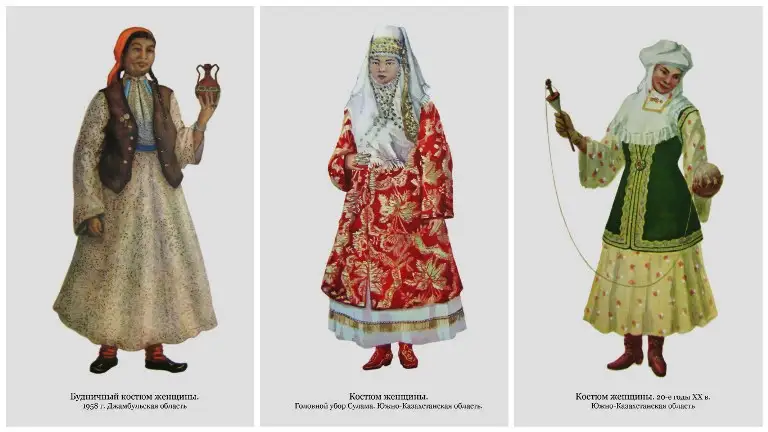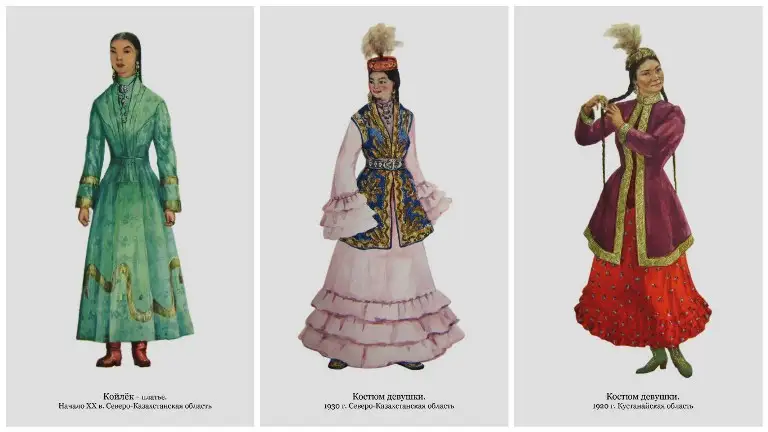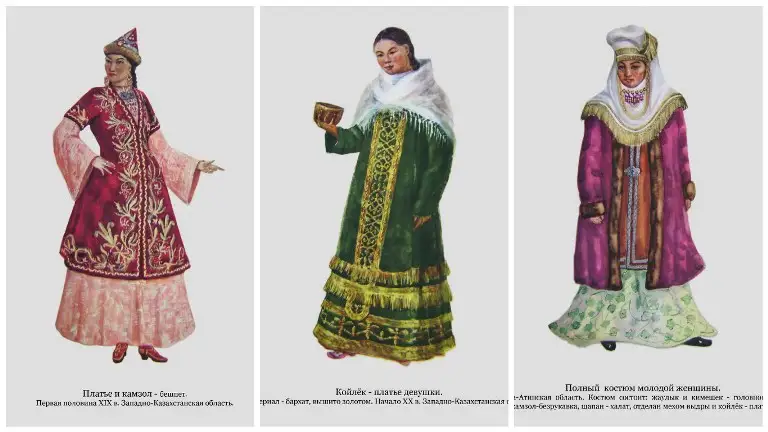Kazakh women never wore hijab (PHOTOS)

National Kazakh wear is widely described in literature. For many years, researchers, historians, archaeologists and fine art experts have been studying the history of the Kazakh traditional wear. In recent years, this issue has raised a great interest among the population. The society has generated various ideas of how Kazakh woman dressed and must dress herself.
The modern tendency of wearing hijab observed among young girls is a centerpiece of the issue. Experts of Almaty-based Kazakhstan Central State Museum helped Kazinform correspondent to reveal the history and peculiarities of the Kazakh national female clothes.
As we know from history, Kazakh ethnicity which formed in late XV- early XVI centuries became a successor of the material and spiritual culture of the tribes who once inhabited the territory of Kazakhstan. This, of course, was reflected on the national clothes which still have the elements of "animal style" and other components of the culture of modern Kazakhs' ancestors.
"In general, clothes serve for protection of human body from external physical factors. With the development of the society, clothes gained a plenty of spiritual, ideological and social meanings. Clothes defined the role and place of a human in society, his confession and age.
Kazakh women's clothes are a synthetic product closely connected with the environment, activity, spiritual and physical demands. Sharp continental climate and nomadic style of living played a key role in formation of the Kazakh traditional clothes. Therefore, Kazakhs' national wear was notable for a special pragmatism, both in materials applied and forms. All researchers of the Kazakh people's history say that such style of life would make it uncomfortable and impossible to wear traditional Islamic clothes. Kazakh women and girls never wore paranja, hijab and other accessories typical for Islamic countries. Women's clothes were always decorated with traditional ornaments and stones. Kamzols (jackets) and dresses were slightly slim-cut," First Deputy Director of the Museum Beibitkali Kakabayev says.
According to him, Kazakh women never closed their faces and never wore the clothes and accessories which hindered movement.
The expert told in details about the peculiarities of clothes of Kazakh women belonging to various age and social groups.
"Young ladies used to wear dresses with frills (kosetek), trousers (shalbars) and a skull-cap (takiya). Richer girls could afford themselves to wear a hat decorated with an animal's fur (borik). At a wedding, brides wore a special headwear - saukele - which is a high (70 cm) conical hat decorated with precious stones and metal fishnet tops. After the wedding, the women wore zhaulyk. And only after a birth of children, they were allowed to wear head-kerchiefs and kimeshek. Kimeshek consists of two parts: kimeshek worn on the head, and the top - shylayish - in the form of a turban, which covered the bottom part of the headwear. ," B.Kakabayev says. 
Prior to marriage, the girls were not allowed to wear kimeshek. Their clothes were quite comfortable and free.
"The girls were actively involved in household works, that is why their clothes had to be comfortable. Shoes were more elegant and were decorated with jewelry items. The girls and women used to wear numerous bracelets, hair decorations - sholpy, shashbau. It is widely known that Kazakhs attached special meaning to the national jewelry. In various regions women decorated saukele in different ways. Prior to becoming a part of the Russian empire, Kazakhs bought fabric in Bukhara, China and Eastern Turkestan. After joining Russia, they started using Russian-produced fabric, because they were more available and cheaper," Kakabayev concluded.
